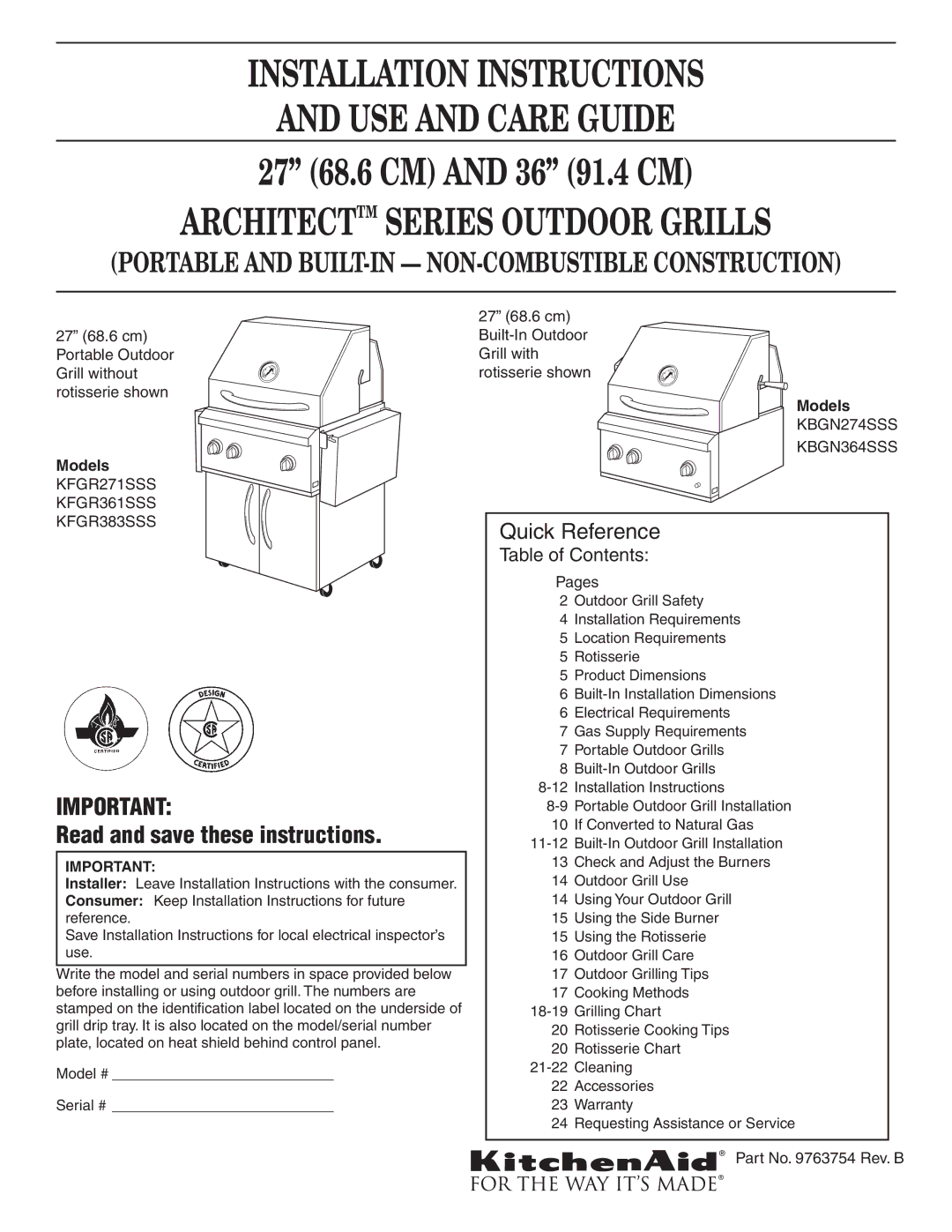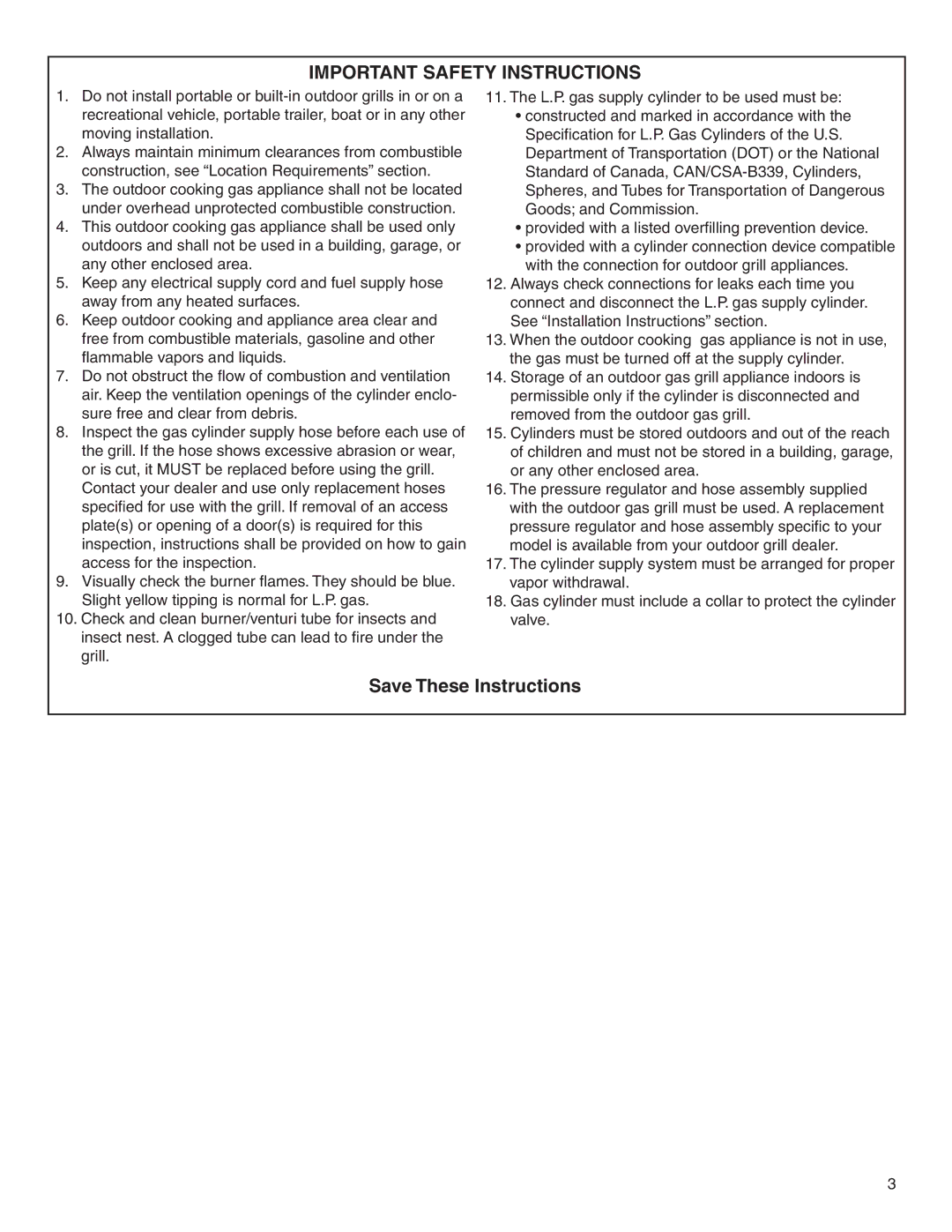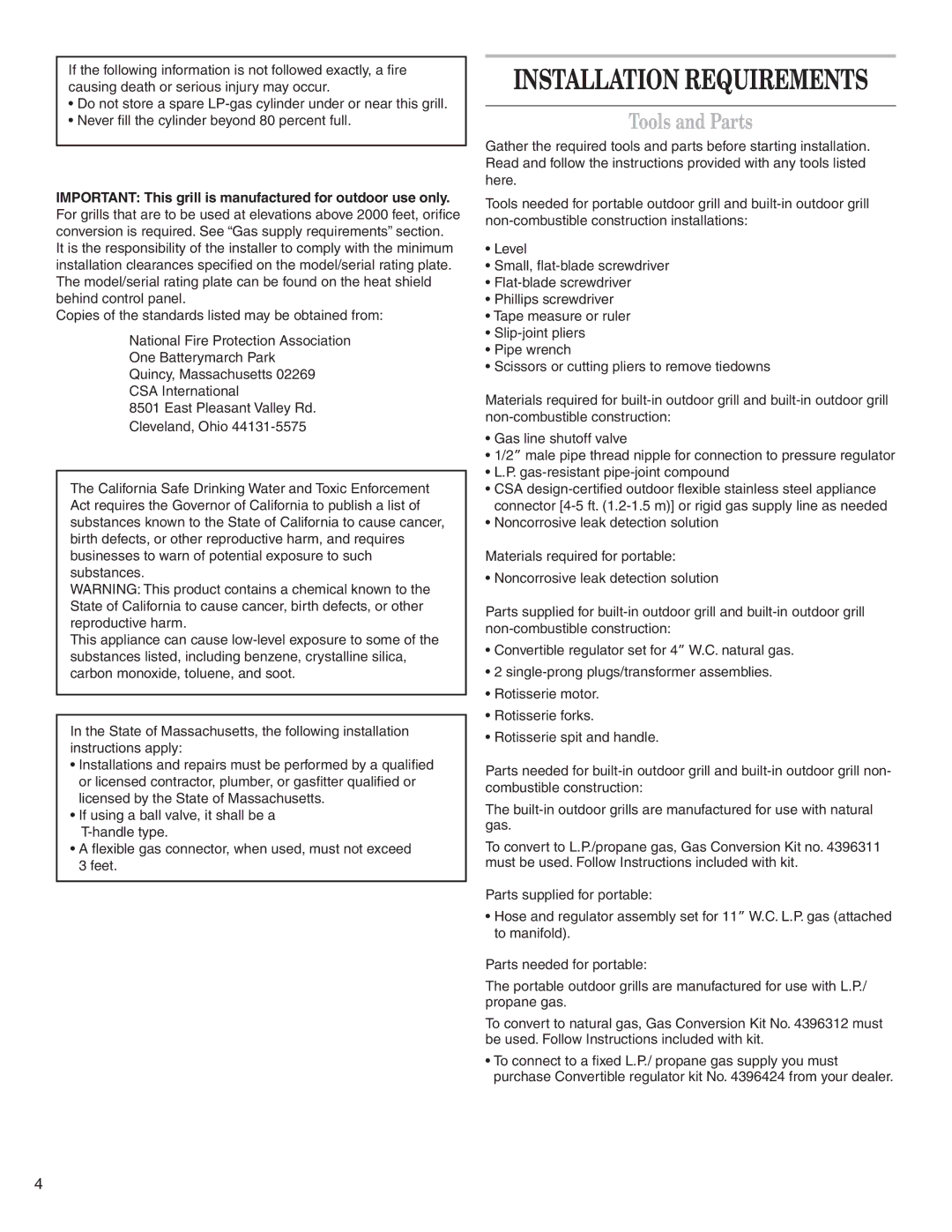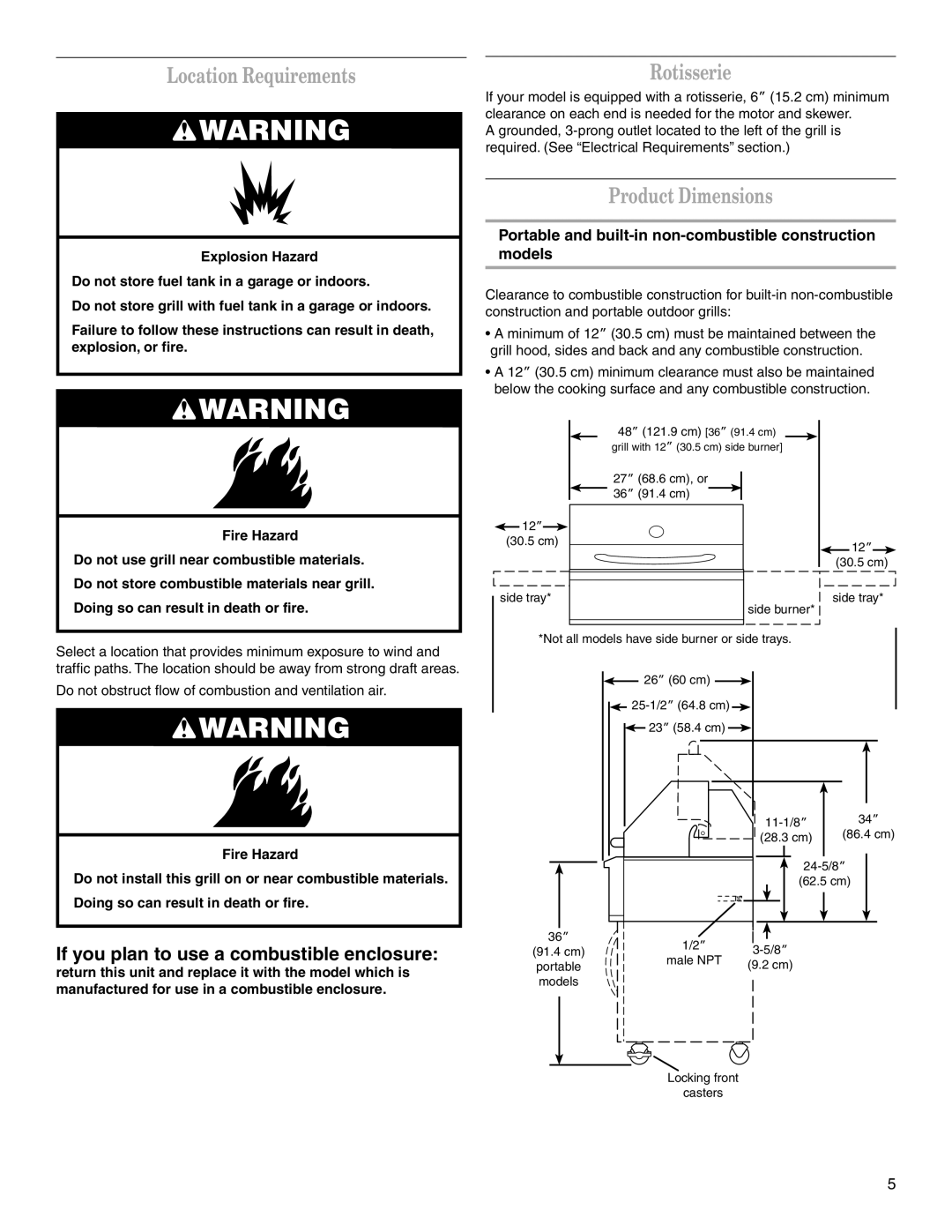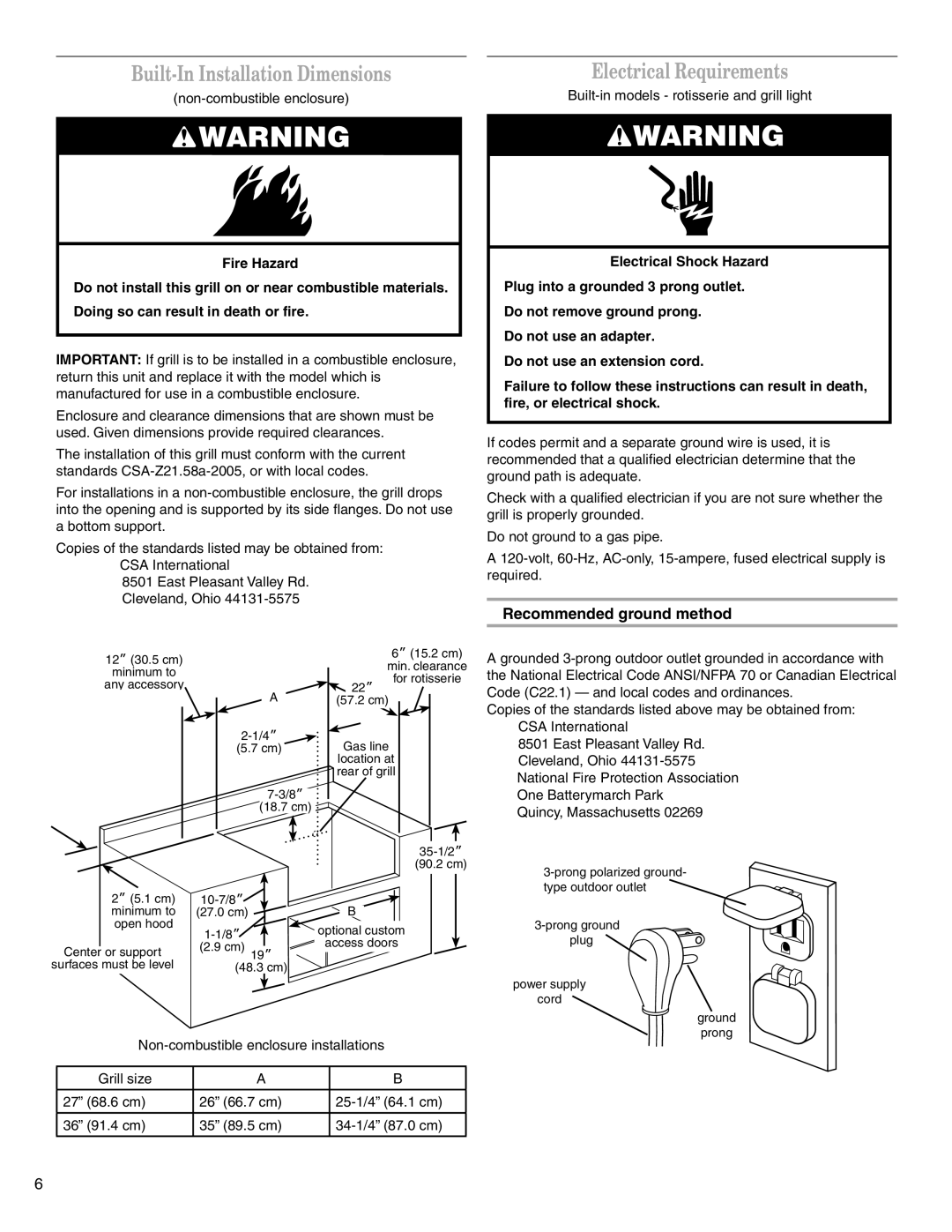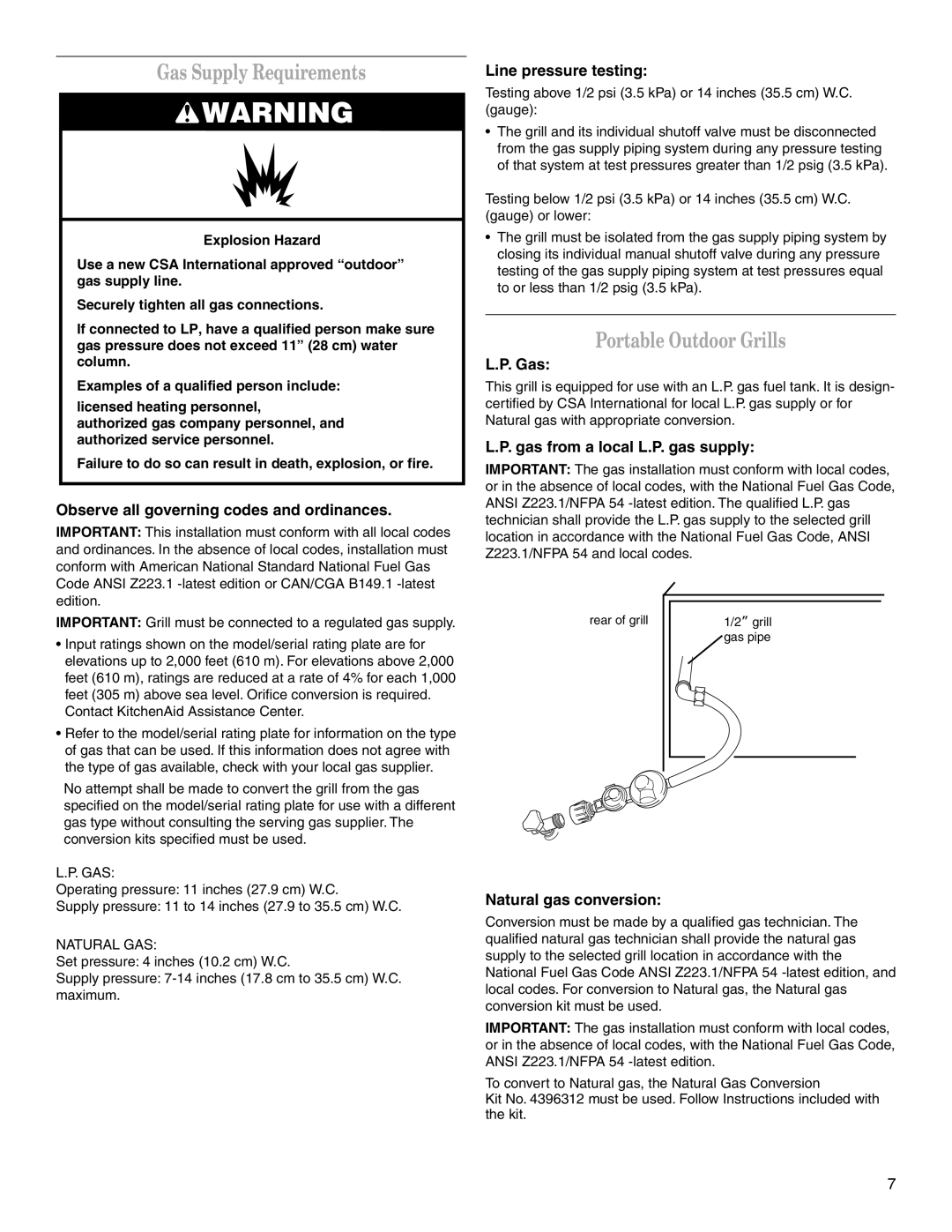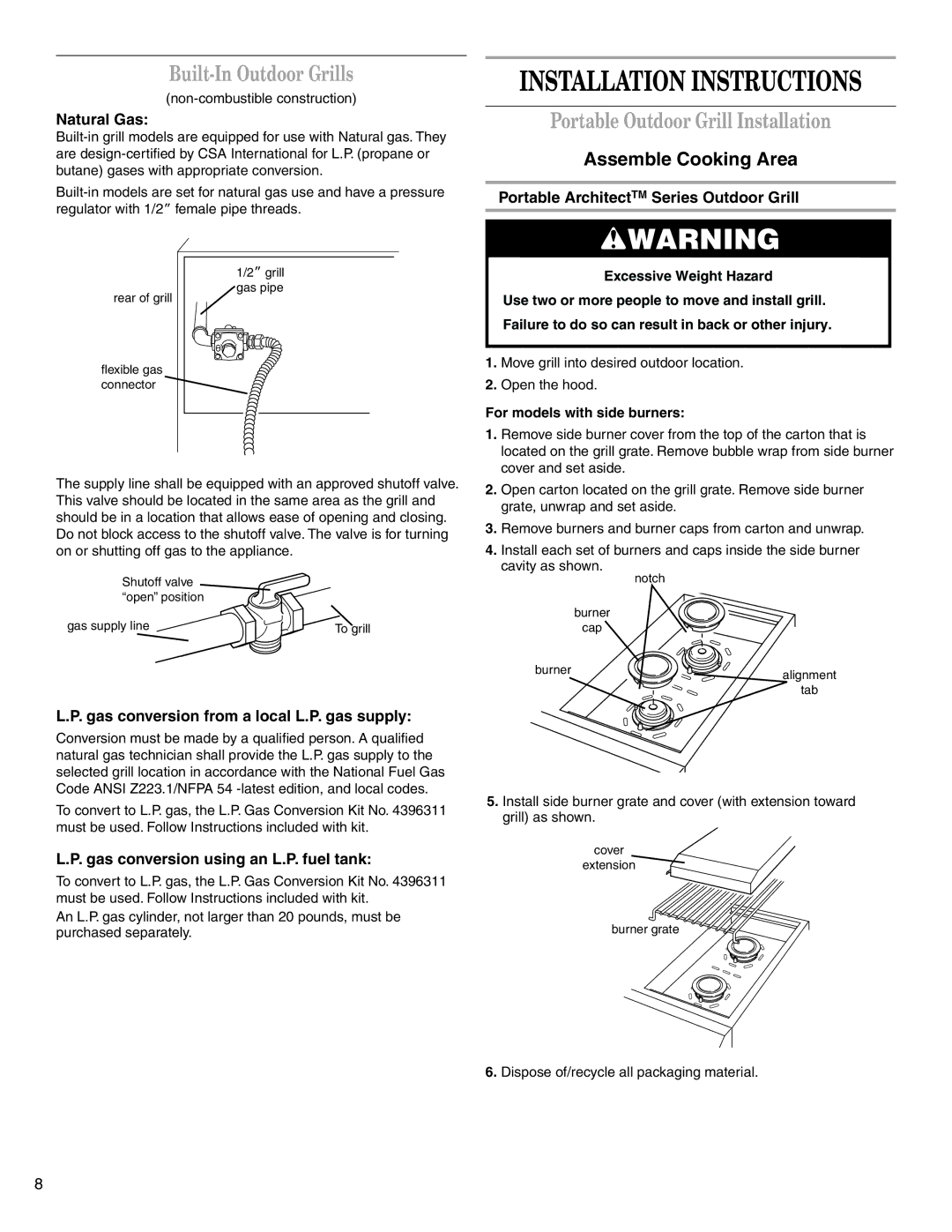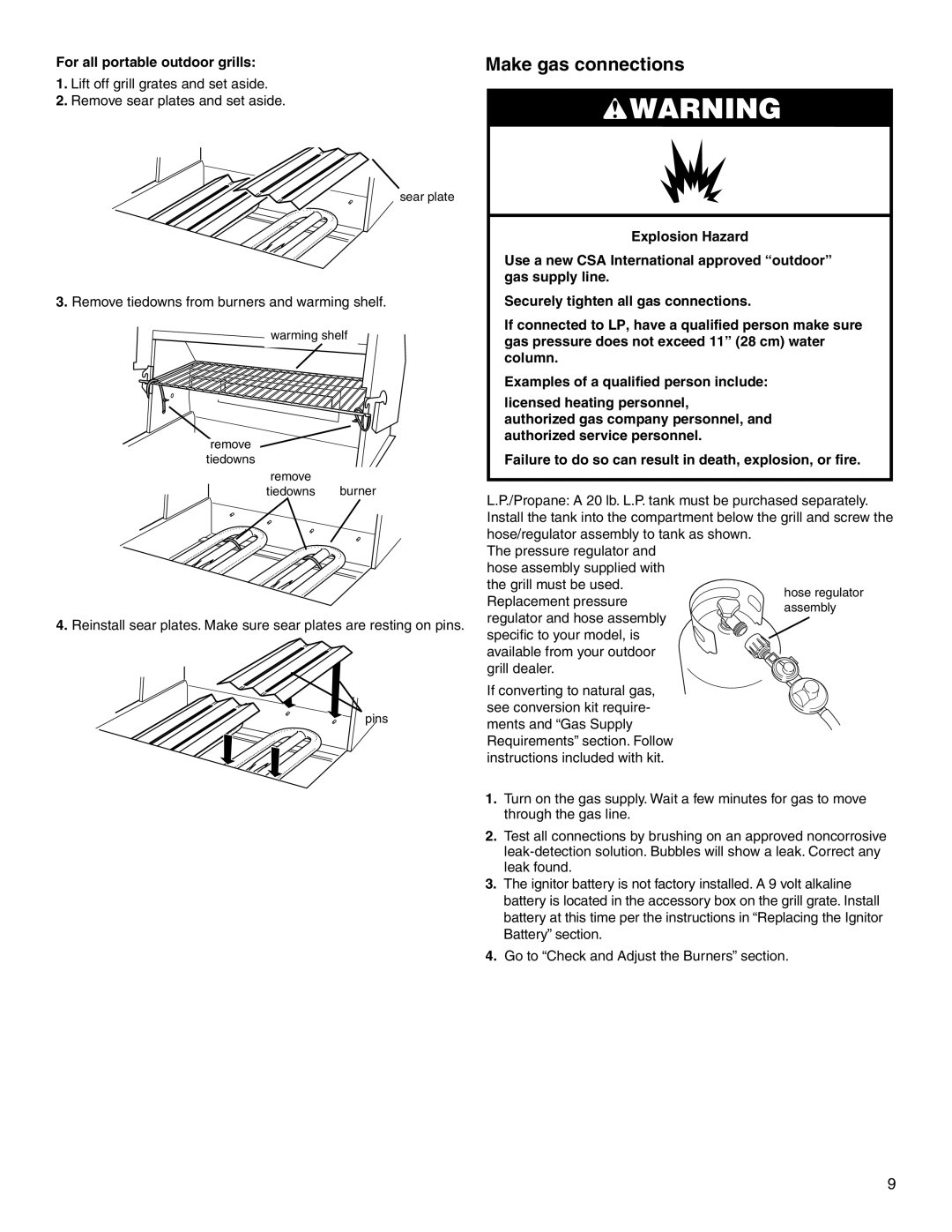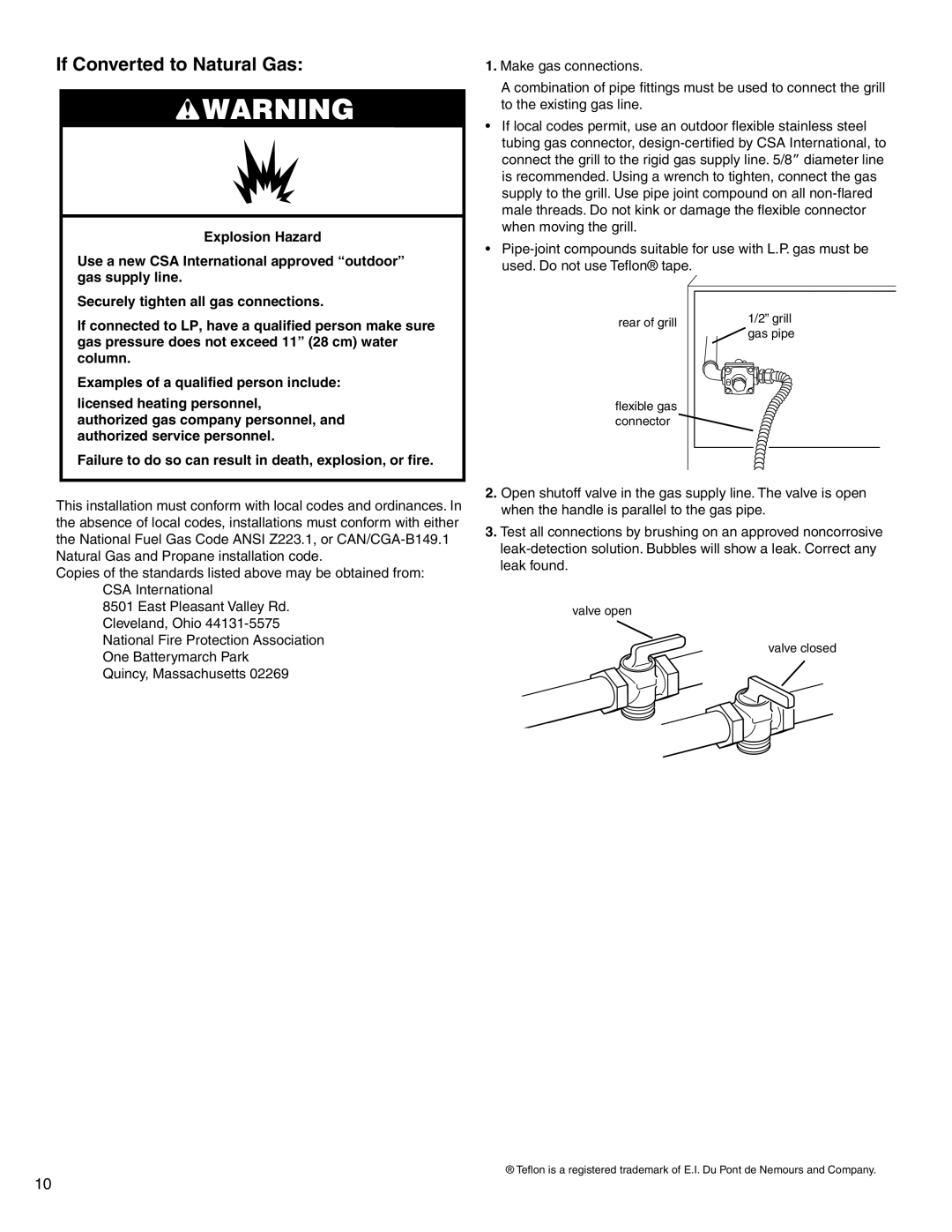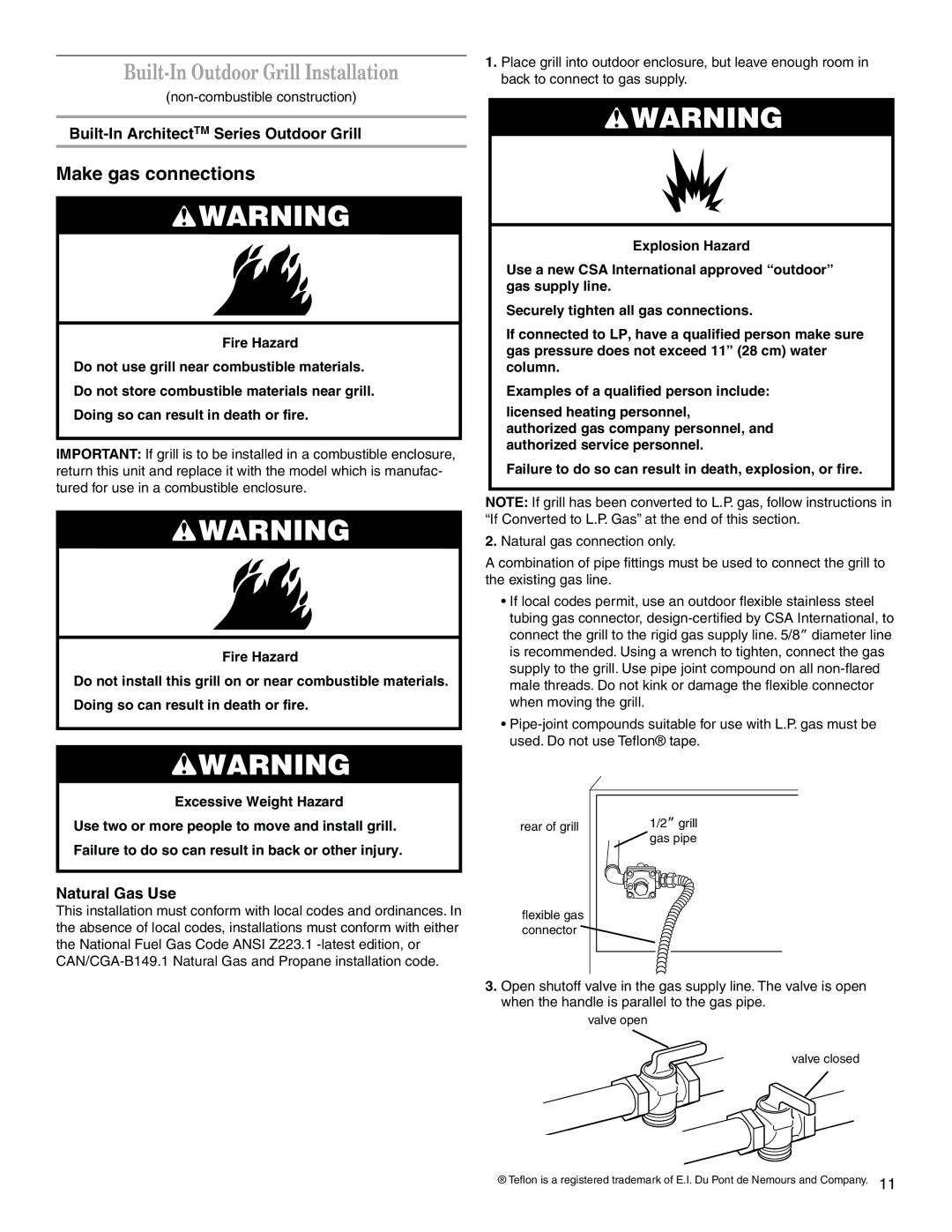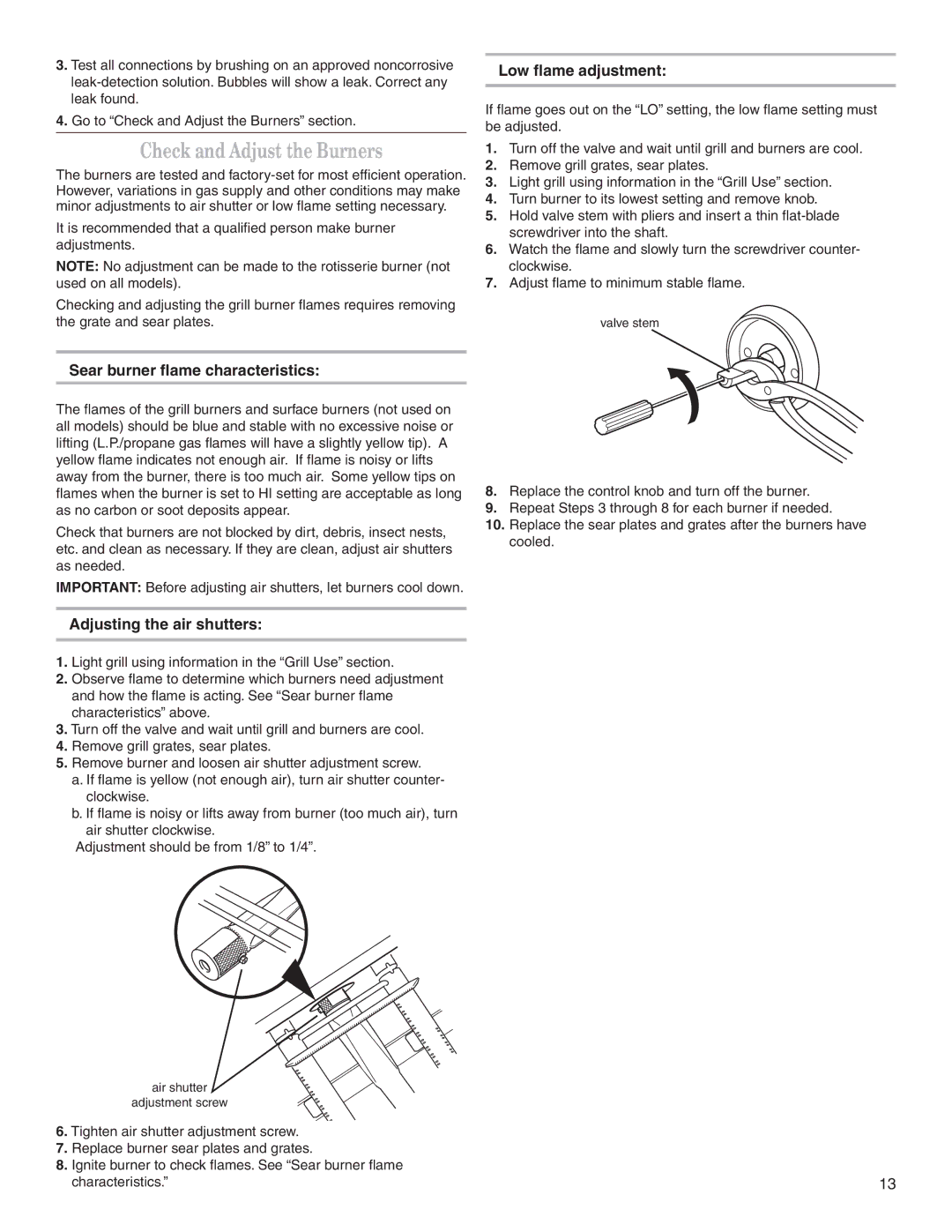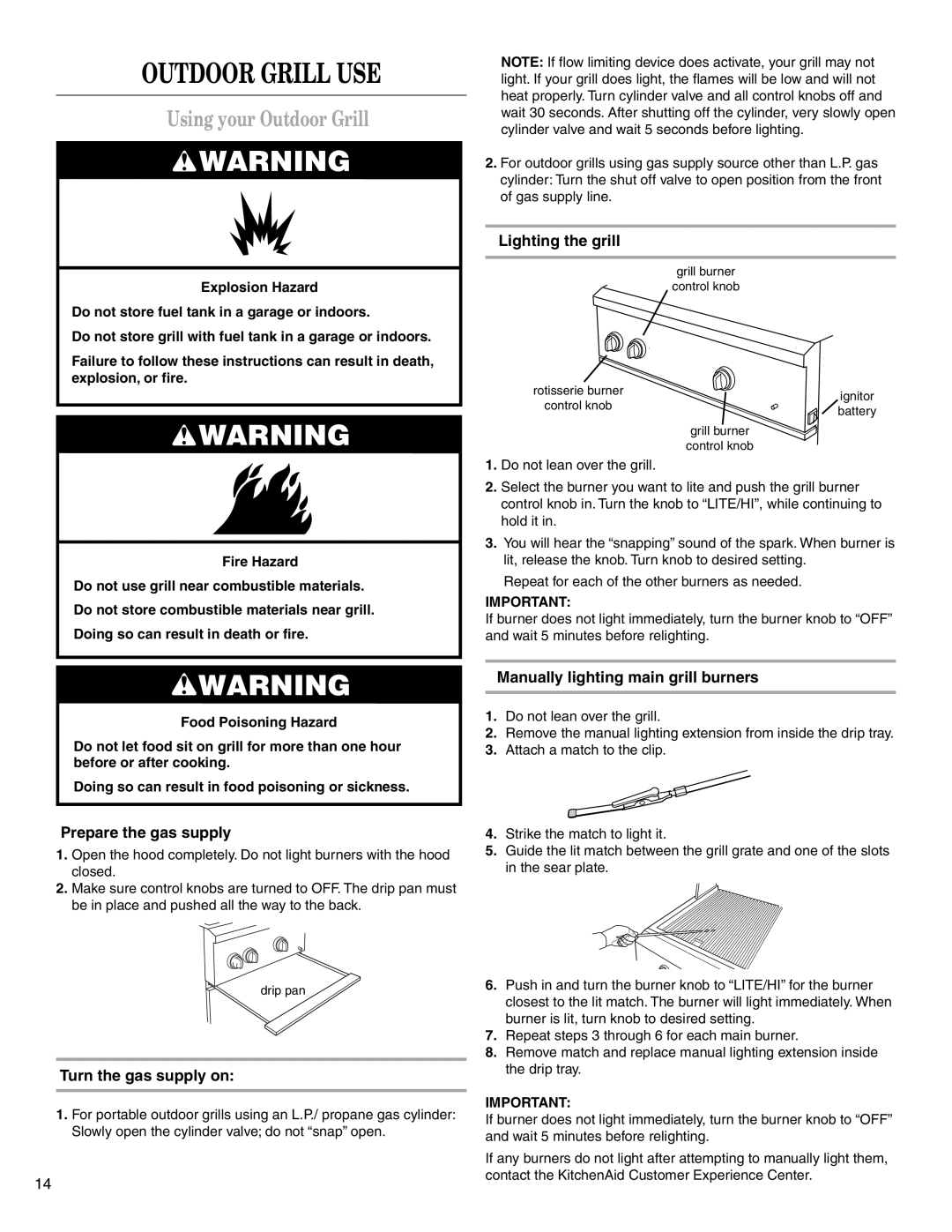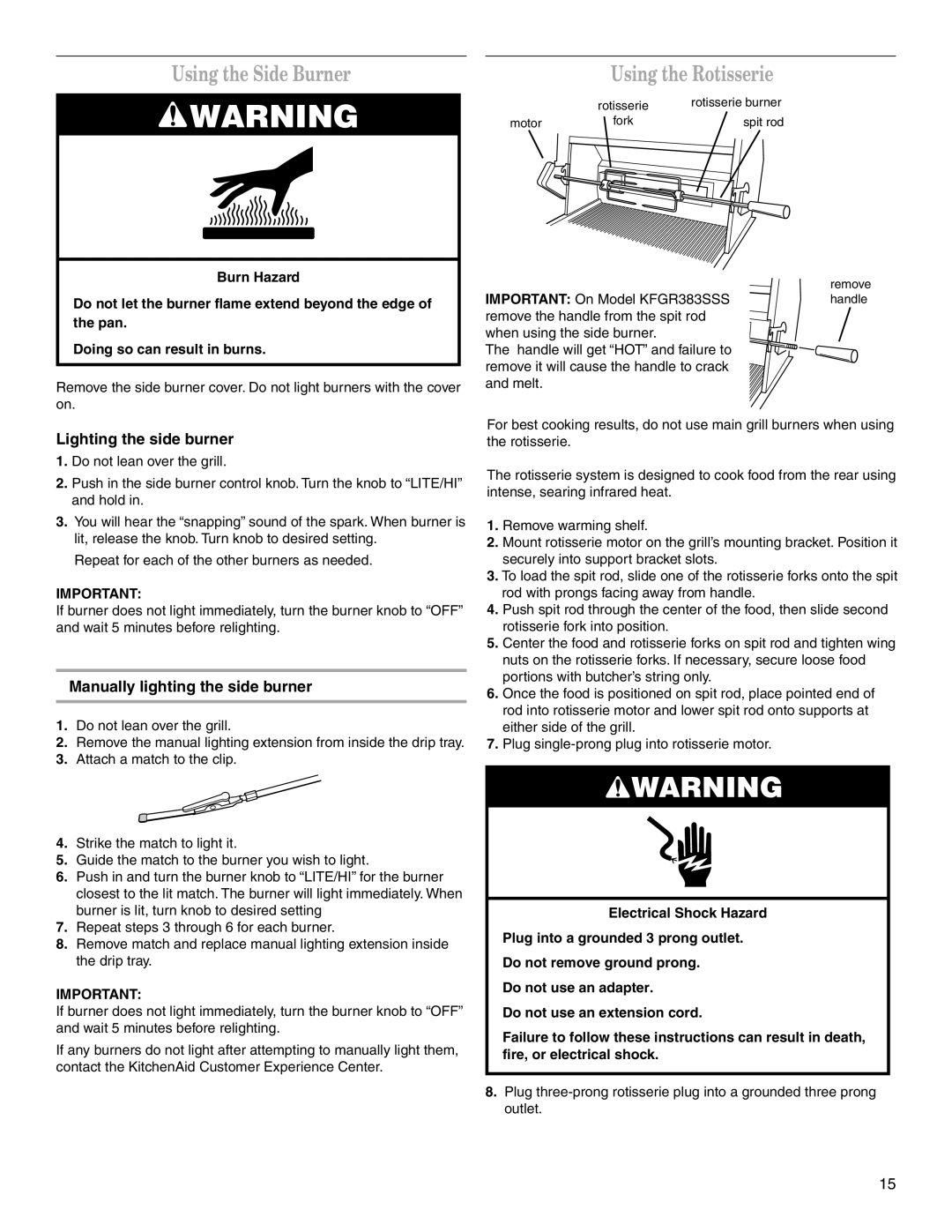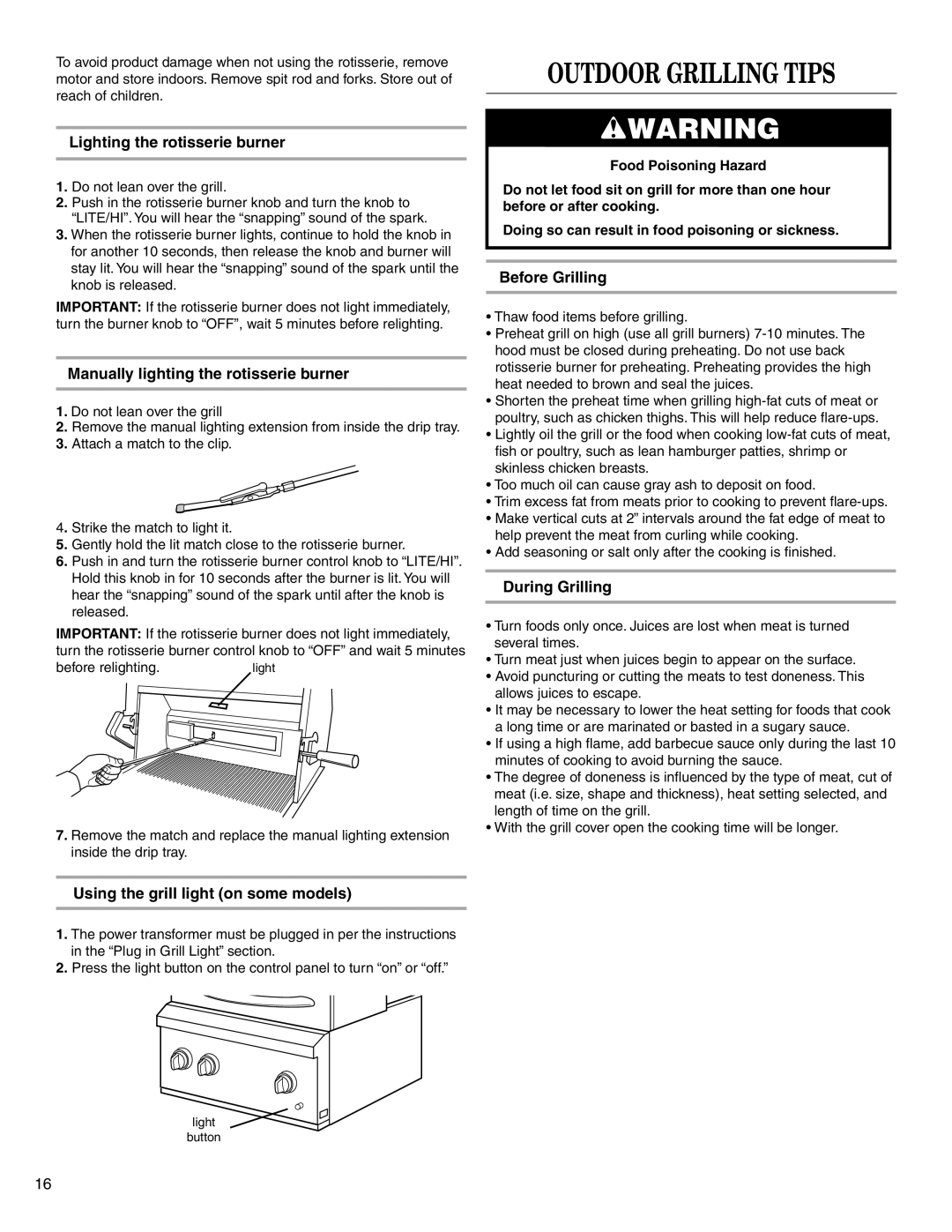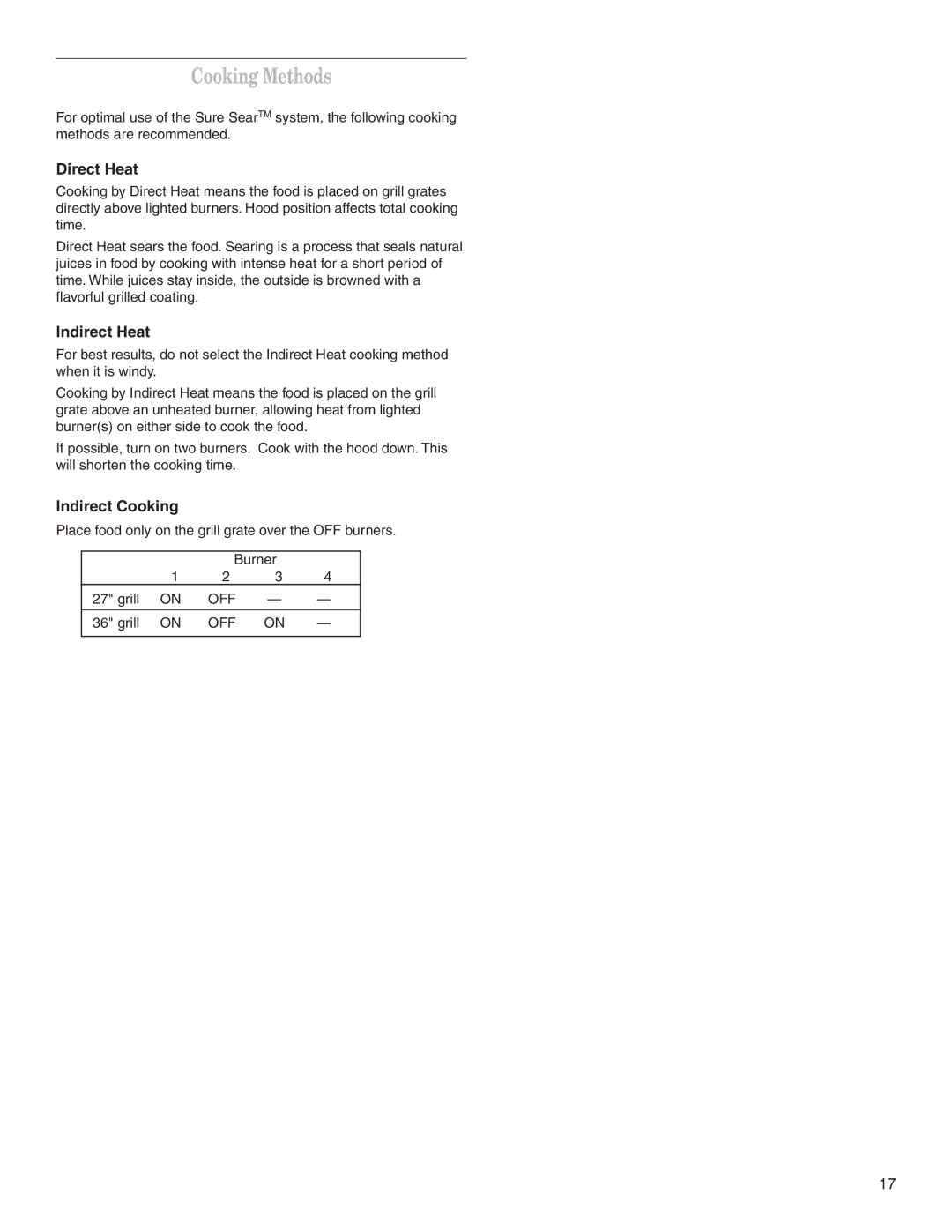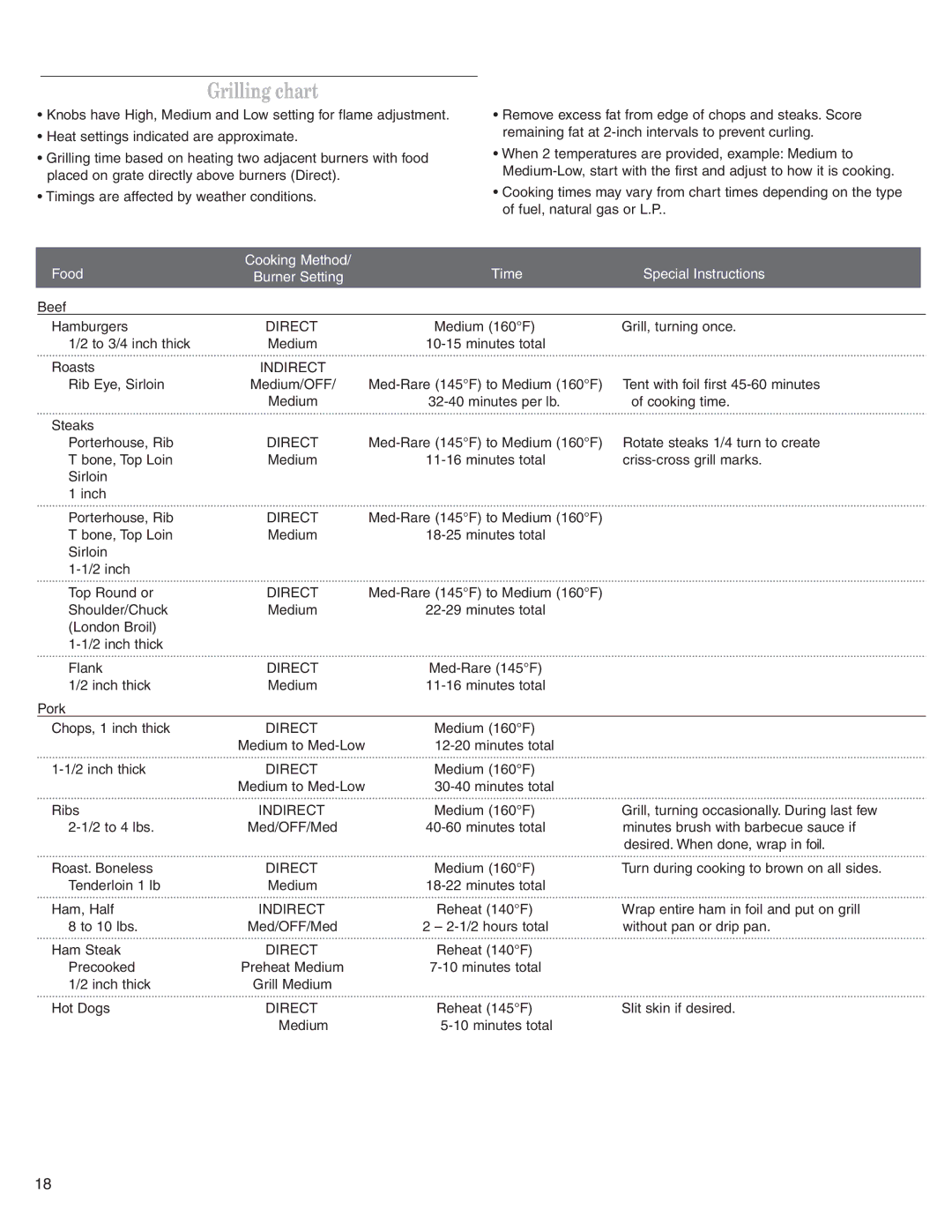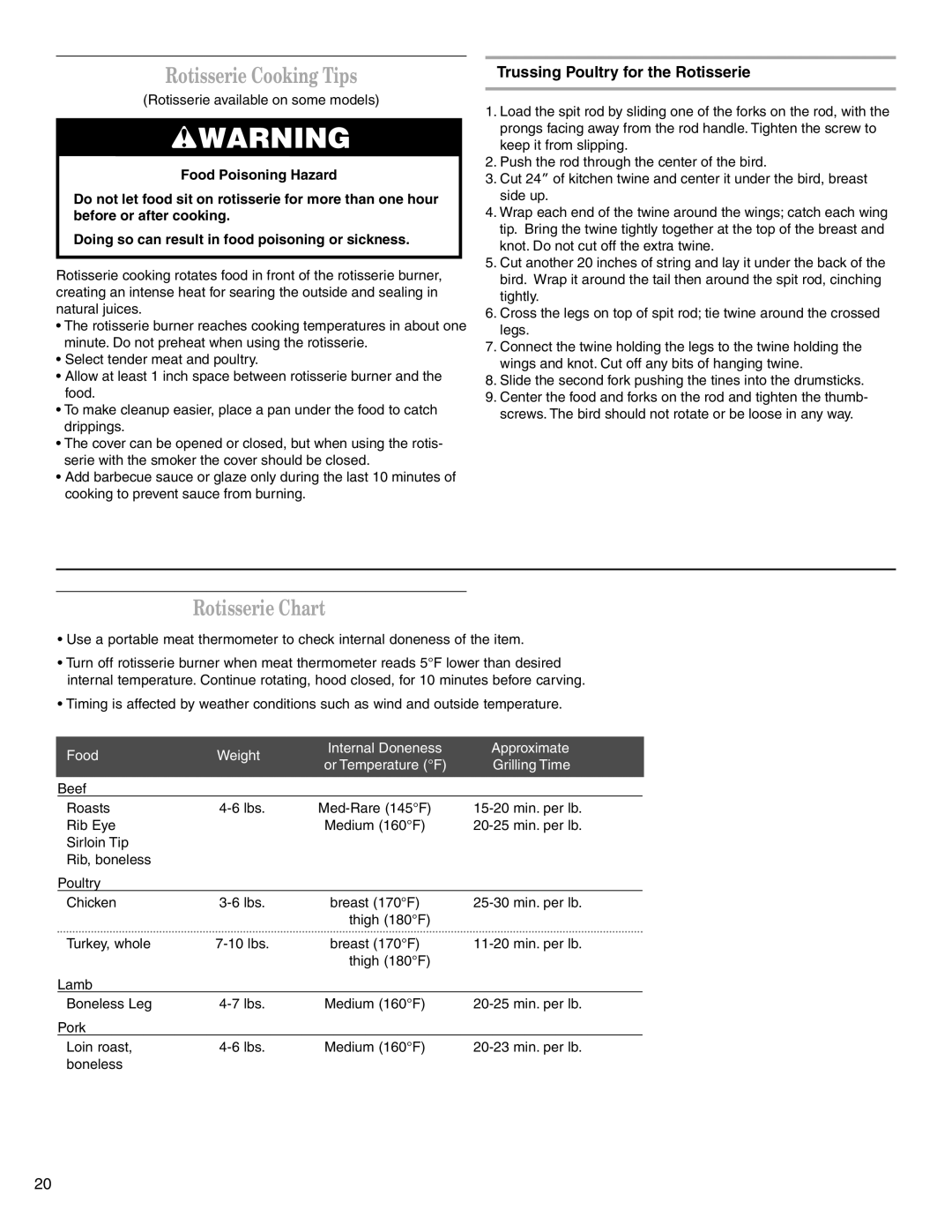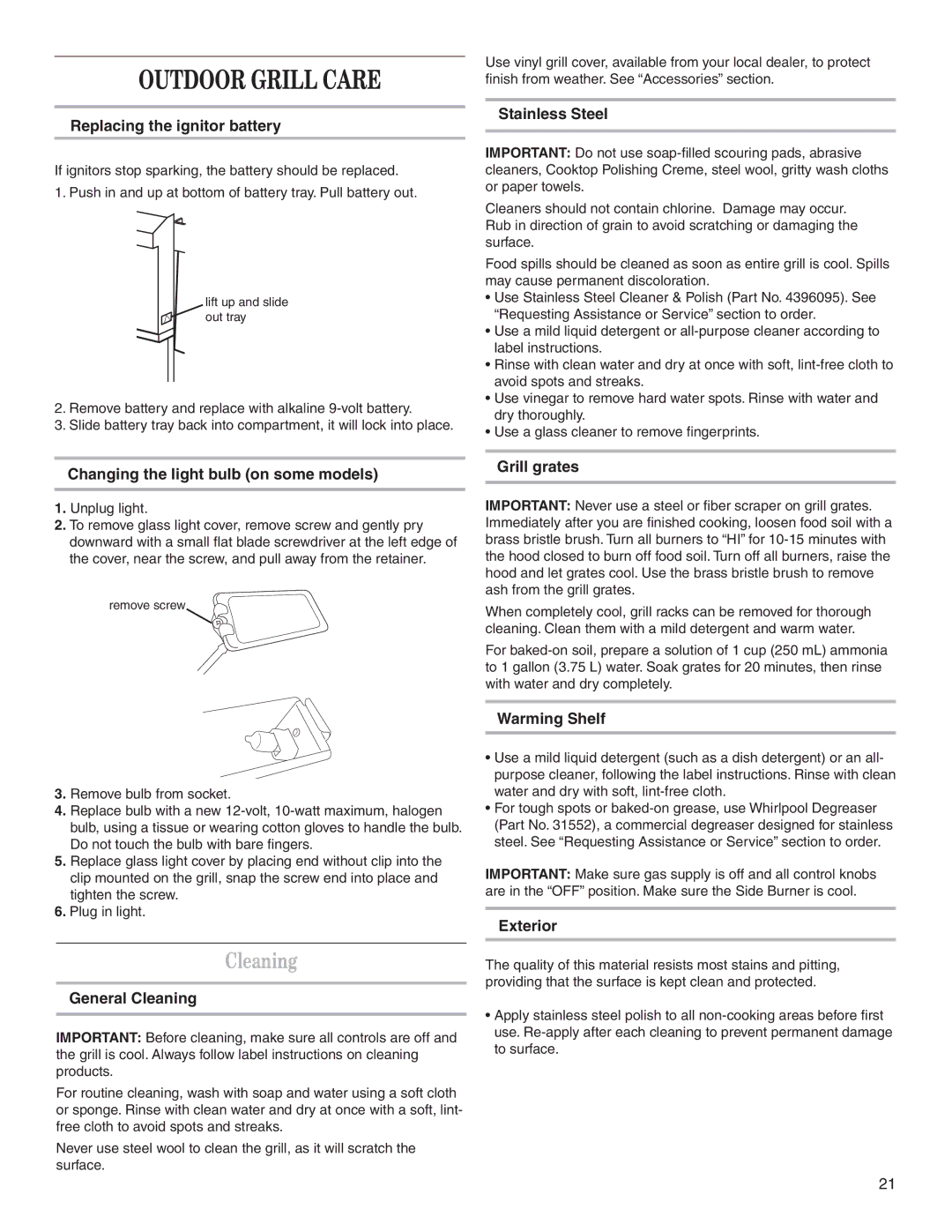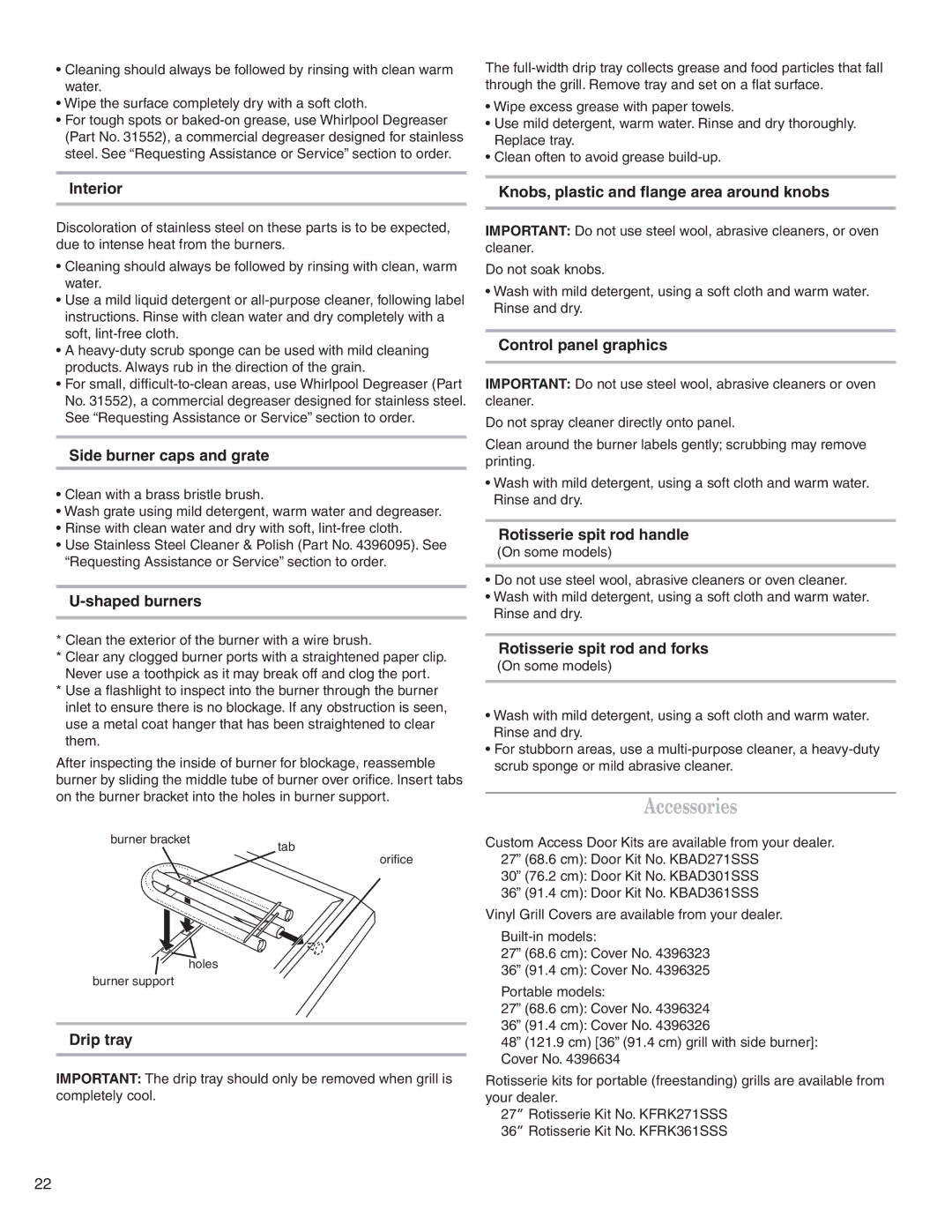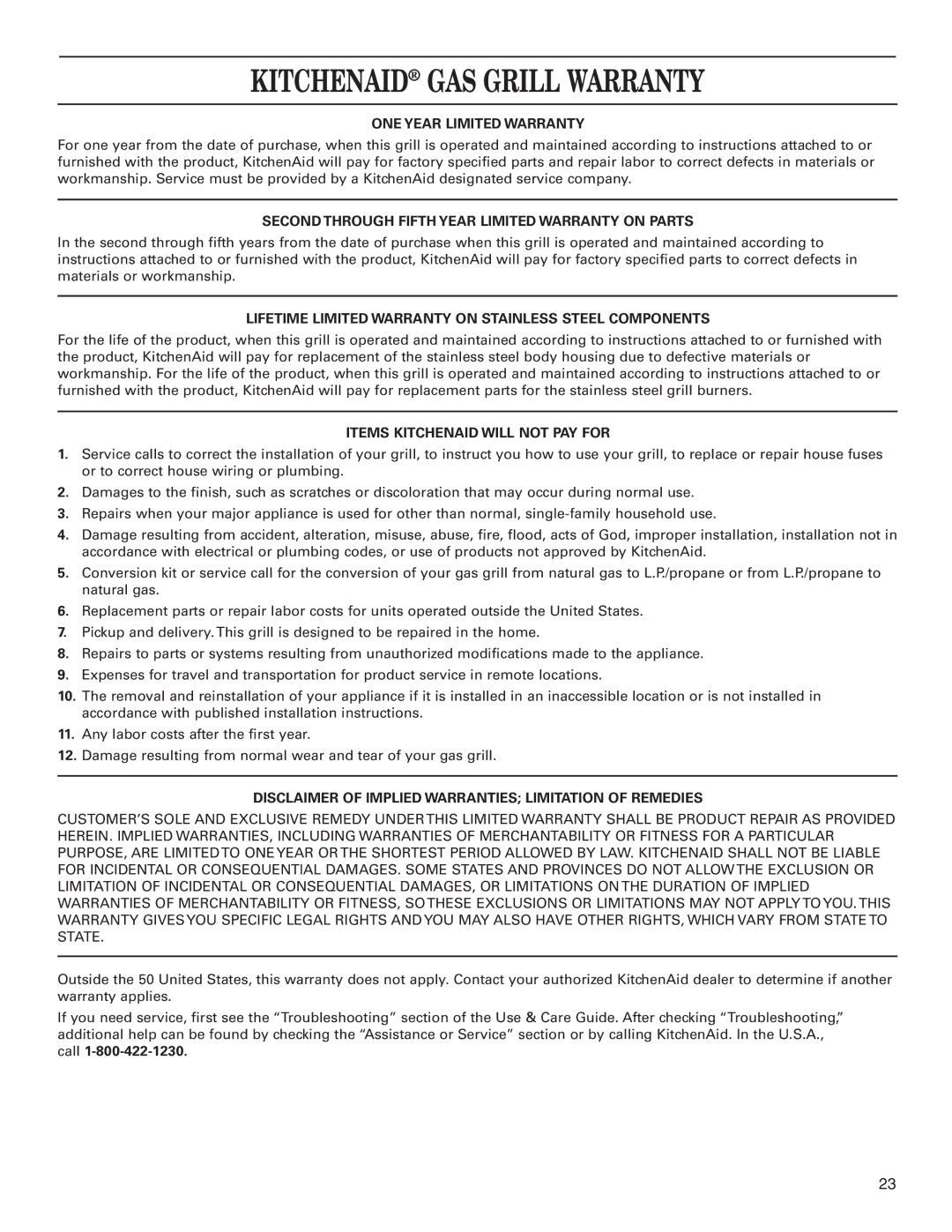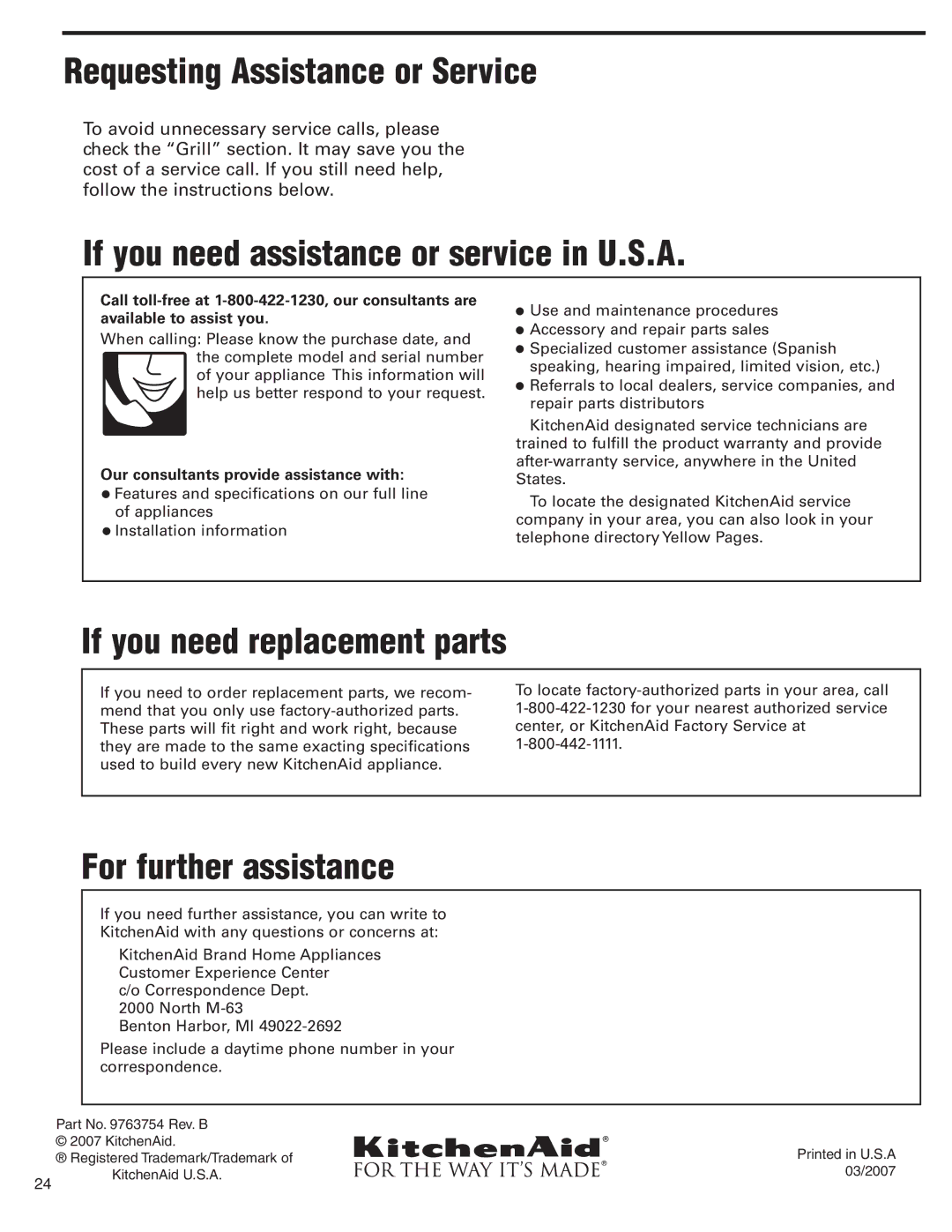
3.Test all connections by brushing on an approved noncorrosive
4.Go to “Check and Adjust the Burners” section.
Check and Adjust the Burners
The burners are tested and
It is recommended that a qualified person make burner adjustments.
NOTE: No adjustment can be made to the rotisserie burner (not used on all models).
Checking and adjusting the grill burner flames requires removing the grate and sear plates.
Low flame adjustment:
If flame goes out on the “LO” setting, the low flame setting must be adjusted.
1.Turn off the valve and wait until grill and burners are cool.
2.Remove grill grates, sear plates.
3.Light grill using information in the “Grill Use” section.
4.Turn burner to its lowest setting and remove knob.
5.Hold valve stem with pliers and insert a thin
6.Watch the flame and slowly turn the screwdriver counter- clockwise.
7.Adjust flame to minimum stable flame.
valve stem
Sear burner flame characteristics:
The flames of the grill burners and surface burners (not used on all models) should be blue and stable with no excessive noise or lifting (L.P./propane gas flames will have a slightly yellow tip). A yellow flame indicates not enough air. If flame is noisy or lifts away from the burner, there is too much air. Some yellow tips on flames when the burner is set to HI setting are acceptable as long as no carbon or soot deposits appear.
Check that burners are not blocked by dirt, debris, insect nests, etc. and clean as necessary. If they are clean, adjust air shutters as needed.
IMPORTANT: Before adjusting air shutters, let burners cool down.
Adjusting the air shutters:
8.Replace the control knob and turn off the burner.
9.Repeat Steps 3 through 8 for each burner if needed.
10.Replace the sear plates and grates after the burners have cooled.
1.Light grill using information in the “Grill Use” section.
2.Observe flame to determine which burners need adjustment and how the flame is acting. See “Sear burner flame characteristics” above.
3.Turn off the valve and wait until grill and burners are cool.
4.Remove grill grates, sear plates.
5. Remove burner and loosen air shutter adjustment screw.
a. If flame is yellow (not enough air), turn air shutter counter- clockwise.
b. If flame is noisy or lifts away from burner (too much air), turn air shutter clockwise.
Adjustment should be from 1/8” to 1/4”.
air shutter
adjustment screw
6. Tighten air shutter adjustment screw. |
| |
7. | Replace burner sear plates and grates. |
|
8. Ignite burner to check flames. See “Sear burner flame |
| |
| characteristics.” | 13 |
